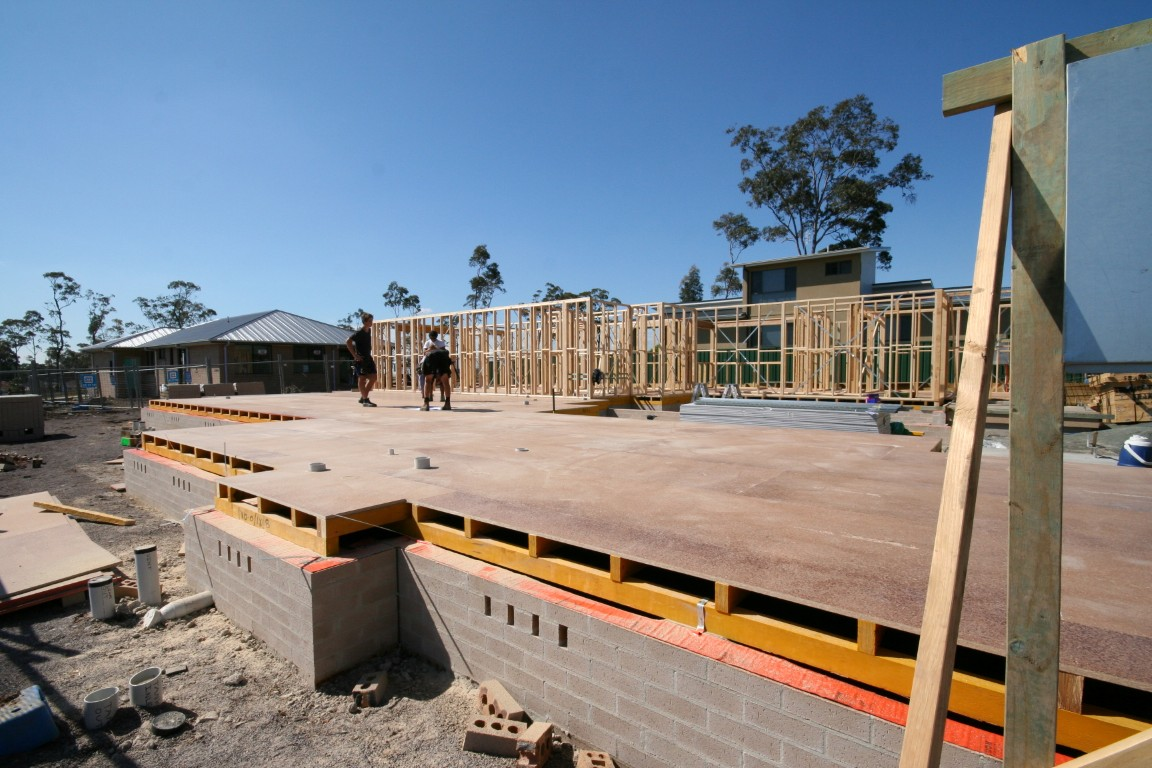As I was dicing onion for tonight’s dinner, I saw some news on TV that made my ears prick. A house in Swansea, a suburb of Newcastle was seemingly sinking into a hole. The cause? An old mine shaft laying approximately 25m below.
This is mine subsidence – very unusual, yet something we do prepare for in our development process and I quickly turned up the TV to listen to the report.
The area underneath the neighbourhood was once part of the Swansea Pit, a coal mine abandoned in 1953. It was reported that Mine Subsidence Board officers believe the sinkhole appeared above an old vertical furnace shaft. Today they were pouring concrete into the hole to stabilise the area around the house and hopefully they can secure the area and save the house. There is one comfort for the house owners; the cost for this work required is covered by the Board.
The Mine Subsidence Board is a NSW government department funded by the current mining companies today. The mine companies pay a levy that goes into a trust account and is to be used for any repair works that are a result of mines located beneath the property. It operates for the community in coal mining areas of New South Wales and is responsible for administering the Mine Subsidence Compensation Act. The Act provides for compensation or repair services where improvements are damaged by mine subsidence resulting from the extraction of coal.
In an area where you are building new dwellings and that has been identified as undermined, there is a process to follow. The Mine Subsidence Board is very helpful and provides strict building guidelines on what can be built and the construction methods. They need to approve and stamp the engineer’s plans for the footings that will support the dwelling. They inspect during the building process to ensure the builder is meeting the engineering requirements and they keep a copy of the approved plans on file. If any problems arise in the future that relate to the undermining of the site, the Board make all repairs at their cost, kind of like an insurance company for your development but you don’t pay any premiums.
There is no time limit on the coverage so they basically guarantee the project as long as they have approved the engineering.
As part of our research process, one of our first checks on a potential development site is with the Mine Subsidence Board. They can tell you over the phone if the land our client is purchasing is within a proclaimed Mine Subsidence District. The purpose of a District is to prevent damage through surface development controls that take account of the risk of damage by subsidence from old, current and future mining.
With detailed geo technical reports and the assistance of the Mine Subsidence Board, a development in an undermined area can be very successful. We have used ‘Pot Hole’ construction methods on a duplex development and the construction costs were not very much more than normal construction. But we did secure the land at a discounted price which meant more equity was created during the development for our client.
http://www.minesub.nsw.gov.au/SiteFiles/minesubnswgovau/MSB4ppA4Potholes07.pdf
If you own a property in Newcastle, chances are its undermined, but the type of sink hole activity reported tonight is very uncommon, so don’t lose any sleep over it. If you are building in a new estate, always have a geotech report completed and use the resources on hand at the Mine Subsidence Board to ensure your building process is correct for the location.
.jpg)



